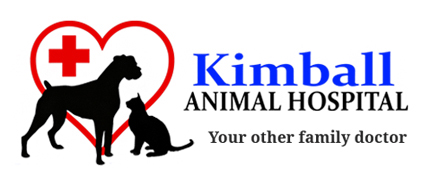Library
-
Ear canal tumors are abnormal growths that can develop from any part of the ear canal (the skin, the glands of the skin that produce earwax and oil, and the underlying connective tissues, muscles, and bones). Initially, these tumors may appear as one or more pink, white, or purple nodular masses in the ear canal. If benign, they may grow to a certain size and may or may not be problematic. If malignant, they may grow, ulcerate (break open) and bleed, and nearly always become infected, causing recurrent or chronic ear infections. The treatment of choice for ear canal tumors is surgical excision.
-
Infection of the external ear canal (outer ear infection) is called otitis externa and is one of the most common types of infections seen in dogs. Some breeds, particularly those with large, floppy or hairy ears like Cocker Spaniels, Miniature Poodles, or Old English Sheepdogs, appear to be more prone to ear infections, but ear infections may occur in any breed. Ear infections are painful.
-
Echinococcosis refers to being infected with a tapeworm of the genus Echinococcus and is primarily a parasite of coyotes and foxes. Infected cats are usually asymptomatic, but in both cats and humans the parasite can cause large cysts to form within the lungs and liver. E.multilocularis is treated with praziquantel and in most cases the prognosis is good.
-
Echinococcosis refers to being infected with a tapeworm of the genus Echinococcus and is primarily a parasite of coyotes and foxes. Infected dogs are usually asymptomatic, but in both dogs and humans the parasite can cause large cysts to form within the lungs and liver. E.multilocularis is treated with praziquantel and in most cases the prognosis is good.
-
Ehrlichiosis is a tick-borne bacterial (Ehrlichia) infection spread by the brown dog tick found in many areas of North America. There appear to be three stages of disease: acute, sub-clinical, and chronic or clinical. Abnormal findings on initial lab work include thrombocytopenia, anemia, hyperglobulinemia, and proteinuria. In-clinic ELISA tests can be used to screen for exposure but will be negative if the infection is new. Blood can be sent for PCR testing to demonstrate infection and to determine the species of Ehrlichia. Prevention includes minimizing exposure to ticks and use of tick prevention medication regularly.
-
An electrocardiogram (ECG, EKG) is a test that is used to assess the heart. More specifically, an ECG measures the transmission of an electrical impulse through the heart. This test is not painful and is typically performed as an outpatient procedure. Analyzing the electrical impulses produced as the heart beats can help identify a number of different abnormalities within the heart.
-
Endocarditis is an infection of a heart valve, most often affecting the mitral or aortic valve. It can arise any time that bacteria enter the bloodstream, though it is more common when the heart valve has already been damaged for some other reason. The clinical signs of endocarditis are often nonspecific in the early stages, but may progress to include signs of heart failure later in the course of the disease. The diagnosis and treatment of endocarditis can present a challenge, requiring multiple tests and prolonged courses of antibiotic therapy.
-
Endocarditis is an infection of a heart valve, most often affecting the mitral or aortic valve. It can arise any time that bacteria enter the bloodstream, though it is more common when the heart valve has already been damaged for some other reason. This handout discusses the causes, clinical signs, diagnosis, treatment, and prognosis of this condition.
-
English Cockers are friendly, active and love to be with their people. The breed is known to be particularly good with children, especially school-aged youngsters who have been taught how to behave around dogs.
-
Foxhounds have been bred for centuries to live as a pack in the kennel, with few living as house dogs. But if you raise one in the home, you're in for a pleasant surprise. They are easy-going, calm, and gentle; good with children, other dogs, and other pets.

